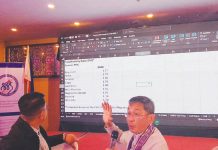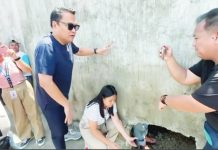
THIS year’s State of the Nation Address (SONA) was a break from the extravagant red carpet — literally and figuratively — as government officials and special guests opted for understated ensembles. For Filipino designer Michael Leyva, the “quieter” theme challenged him to focus on the details, instead of its aesthetic value.
Known for his chic sense of style, Leyva has been one of the go-to designers for celebrities and lawmakers in the SONA. One of his notable clients is Heart Evangelista, who donned two understated ensembles for President Ferdinand “Bongbong” Marcos Jr.’s fourth SONA.
Aside from Evangelista, his clients this year included First Lady Liza Araneta-Marcos, ACT-CIS representative Jocelyn Tulfo, Mar Tulfo, and Deputy Social Secretary Dina Tantoco, to name a few.
The departure from the traditional glamorous garb was a “big change” from what the designer is used to, as it was “quieter and less flashy” than usual.
“It challenged me to focus more on the details and the story behind each design, not just how it looks on camera. I had to be more creative while keeping everything simple and respectful,” he continued.
With this in mind, Leyva admitted that it was “hard” to find the balance between honoring his client’s wishes and keeping his designs solemn.
This year witnessed the removal of the traditional red carpet in the north and south wing lobbies of the Batasang Pambansa. At the same time, lawmakers and guests opted for a simpler approach in their Filipinianas. While some went for intricate details on muted tones, others chose deeper hues as the added oomph.
This step-back from the traditional SONA fashion was done for an understandable reason. It was the House of Representatives’ way of showing solidarity with the victims of typhoons “Crising”, “Dante”, and “Emong” that hit the nation.
When asked about the possibility of removing the red carpet for good, Leyva said he is not in favor of doing so, as it is supposed to be a platform for designers to showcase their work.
“The red carpet gives designers, artists, and even local weavers a chance to show their work. It’s not just about being seen — it’s about showing what we can do and inspiring others. It’s a celebration of Filipino talent,” he said.
Since SONA is one of Leyva’s busiest times of the year, he takes the pressure as a driving force to keep moving forward in his work. (Hannah Mallorca © Philippine Daily Inquirer)







